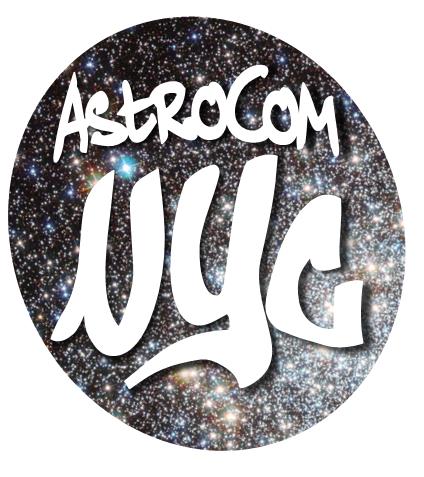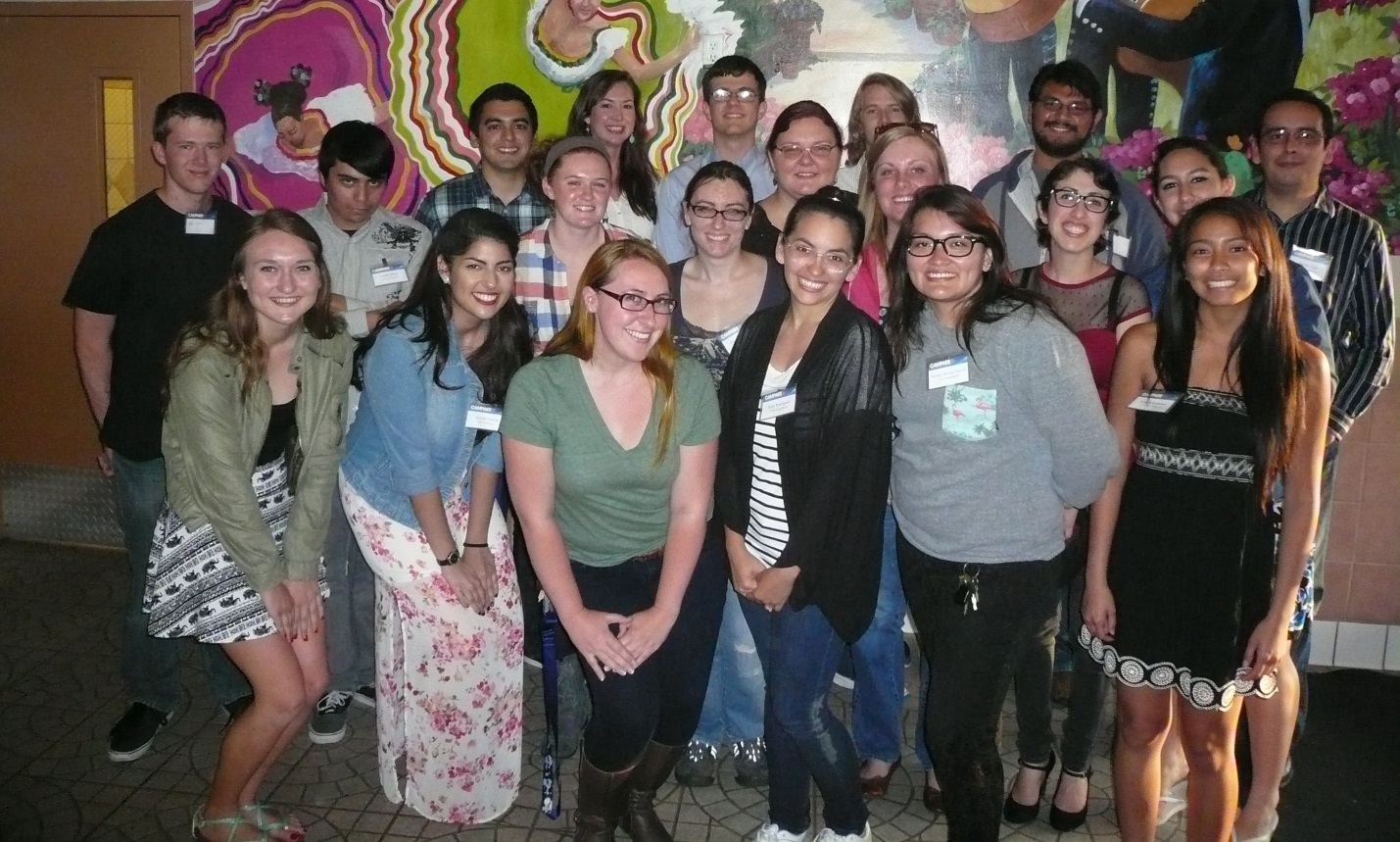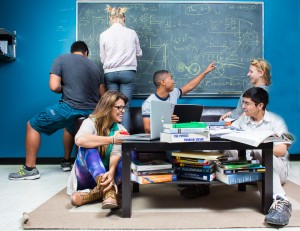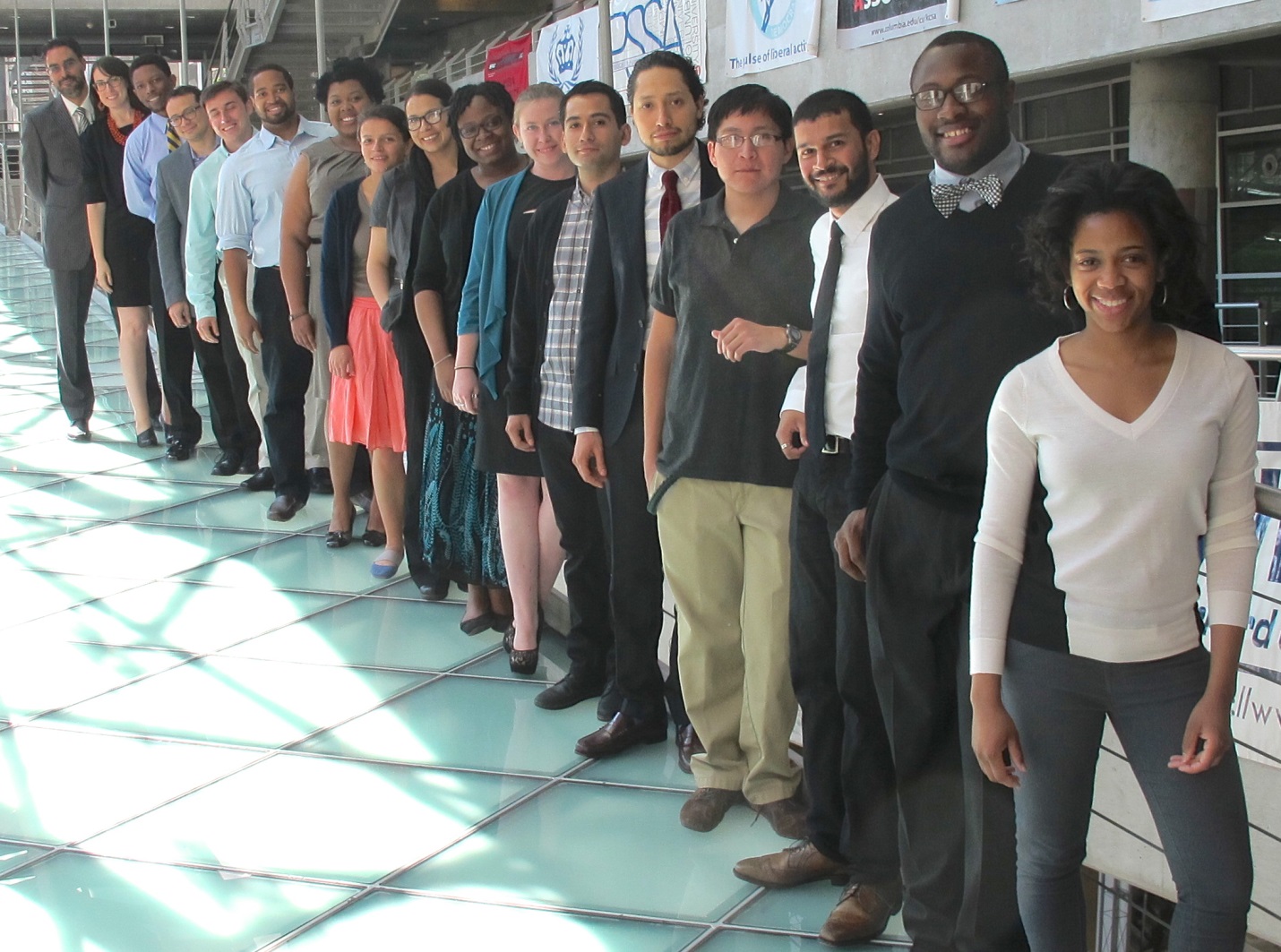AST Broadening Participation Resources

Students and Faculty from the Fisk-Vanderbilt Master's-to-PhD Bridge Program
NSF Astronomy Division funding opportunities to help broaden participation
Partnerships in Astronomy & Astrophysics Research and Education (PAARE)This AST-led program is designed to enhance diversity in astronomy and astrophysics research and education by stimulating the development of formal, long-term, collaborative research and education partnerships among minority-serving institutions and partners at research institutions. The key to PAARE's success is that the award lies at the MSI, which greatly aids in building up research infrastructure.
Education and Special Programs (ESP)Funds numerous awards aimed at increasing diversity, evaluating broadening participation programs, and professional development for young scientists.
Research Experiences for Undergraduates (REU)Many REU Sites have well-developed plans to recruit applicants from diverse backgrounds, and some specifically recruit from local, minority-serving community colleges.
NSF Astronomy and Astrophysics Postdoctoral Fellowships (AAPF)These fellowships provide an opportunity for highly qualified, recent doctoral scientists to carry out an integrated program of independent research and education. AAPF has increased the diversity of awardees by minimizing factors like unconscious bias, stereotype threat, and impostor syndrome in the selection process.
Alliances for Graduate Education and the Professoriate (AGEP)AGEP is committed to the national goal of increasing the numbers of underrepresented minorities (URMs), including those with disabilities, entering and completing science, technology, engineering, and mathematics (STEM) graduate education and postdoctoral training to levels representative of the available pool. URMs include African Americans, Hispanic Americans, American Indians, Alaska Natives, Native Hawaiians and other Pacific Islanders. AST encourages PIs of current research awards to support one (additional) Ph.D. student per award, through a partnership with the AGEP program. Details of eligibility and submission appear in the AGEP-GRS Dear Colleague Letter, NSF 13-071
Programs in the Astronomy community designed to broaden participation
Fisk-Vanderbilt Master's-to-PhD Bridge ProgramThe Fisk-Vanderbilt Master's-to-PhD Bridge Program focuses on increasing the number of underrepresented minorities earning PhDs in astronomy, biology, chemistry, materials science and physics. Our program provides something rare-a family atmosphere-with caring mentors combined with high-level research. In the first two years of the program as students work toward the Master's degree, they have access to instructional and research opportunities both at Fisk and Vanderbilt, as well as full funding to cover tuition and fees, a monthly stipend, and medical insurance. We then assist with applying to a PhD program of choice, at Vanderbilt or elsewhere, making the process as seamless as possible. To date, every student who has successfully completed the Bridge program requirements has been offered admission to a PhD program at Vanderbilt or other top-flight institutions. Students in the Bridge Family, whether at Vanderbilt or elsewhere, are supported to the PhD and beyond. We provide mentorship, networking opportunities, assistance with presentations, qualifying exams, thesis and defense preparation, job talks and job placement. For those wishing to learn more about our practices, please see our Toolkit for Practitioners with rubrics, examples, and documents.
AstroCom NYC
UCSC Professional Development Program
Teaching science as inquiry, engineering as design. A flexible, multi-year program for scientists and engineers at the early stages of their careers, with a primary focus on graduate students. Participants receive training through two intensives, work on a team to collaboratively design an inquiry activity, and then put their new teaching skills into practice in "teaching labs" - ISEE-affiliated educational programs or courses.

AKAMAI: Building Hawaii's Scientific and Technical Workforce
UCSC AKAMAI
The Akamai Workforce Initiative - often shortened and simply called "Akamai," which means clever, smart, or expert in Hawaiian. The initiative is dedicated to building a diverse, local workforce in Hawaii and advancing college students from Hawaii into the STEM workforce. Akamai has a long history of partnering with telescopes and supporting the growth of astronomical and remote sensing facilities in Hawaii, but broadly contributes to the development of a strong and diverse technical workforce in a wide range of fields.

Current and former CAMPARE Scholars at the 2014 annual mentoring dinner
CAMPARE
CAMPARE is a summer research program in which students selected from a network of 22 California State University (CSU) campuses and California Community Colleges (CCC) spend 10 weeks as research interns at one of ten major research institutions in California or Arizona (University of Arizona Steward Observatory, the SETI Institute, JPL, Caltech, Northern Arizona University, and the five southern California UC campuses, UCLA, UC Irvine, UC Riverside, UC San Diego, and UC Santa Barbara). Almost all of the CSU and CCC campuses in the network are Hispanic Serving Institutions (HSIs).

Cal-Bridge Logo
Cal-BridgeThe Cal-Bridge program is a partnership between University of California, California State University (CSU), and community college faculty that aims to increase the number of CSU students from groups traditionally underrepresented in astronomy and physics who complete bachelor's degrees and enter a PhD program, particularly at one of the participating UC campuses (UCI, UCLA, UCSD, UCR, UCSB).
POCAA Partnership in Observational and Computational Astronomy between South Carolina State University, the National Optical Astronomy Observatory, and Clemson University. The mission of POCA is to develop an effective, long-term partnership that combines the strengths of the three institutions to increase the scientific and educational output of all the partners with special emphasis on enhancing diversity in the field of astronomy. The extensive experience of the partners will facilitate the development of new research projects as well as enhance existing ones at all three institutions.
Lamat Summer Research Program on High Performance Computing in Astrophysics

|
REU program hosts ~10-15 undergraduate students for 8 summer weeks, primarily conducting research in UCSC labs on computational astrophysics and other disciplines using computation and big data. Lamat (Mayan word for “star”) aims to increase the retention and graduation rates for students enrolled in community colleges (particularly students from underrepresented groups) through inquiry-based learning of concepts related to astronomy and planetary sciences using state-of-art astrophysical simulations as a common pillar. Lamat also encourages more Hispanic community college students to transfer to UCSC and pursue degrees in the STEM fields
Longitudinal Study of Astronomy Graduate Students
The Longitudinal Study of Astronomy Graduate Students collects data from people who were graduate students in astronomy and astrophysics during the 2006-07 academic year. Working with the American Astronomical Society Demographics Committee, the American Institute of Physics Statistical Research Center collected data in 2007-08 and 2012-13; we will send out a third questionnaire in 2015. The data collected allows us to examine career paths taken by people with training in astronomy - both in and out of astronomy. We are also exploring factors affecting attrition. Using knowledge gleaned from this study, astronomy educators can better prepare students for a breadth of career options. Furthermore, a better understanding of the dynamics surrounding attrition from astronomy will allow for development of programs to increase retention of underrepresented groups.

Bridge Program participants, alumni, and staff at the annual research symposium, June 2014
Columbia Bridge to Ph.D. Program
The Bridge to the Ph.D. Program aims to enhance the participation of students from underrepresented groups in Ph.D. programs in the natural sciences. To achieve this, the Bridge Program provides an intensive research, coursework, and mentoring experience to post-baccalaureates seeking to strengthen their graduate school applications and to prepare for the transition into graduate school. Bridge alumni have gone on to Ph.D. programs at Columbia, but also the University of Michigan, Johns Hopkins, the University of Washington, Albert Einstein, Yale, and SUNY-Albany, among others. Bridge participants are hired as full-time Columbia University research assistants (RAs) for up to two years and conduct research under the mentorship of faculty members, post-doctoral researchers, and graduate students. Bridge participants enroll in one course per semester at Columbia that is related to their future field of study, and attend monthly one-on-one progress meetings with the Program's Assistant Director. The Program also organizes a number of professional development workshops, provides access to GRE test preparation, and partners with Columbia's School of Continuing Education to ensure success while at Columbia and to facilitate application to Ph.D. programs.
Committees of the American Astronomical Society that work to broaden participation
Committee on the Status of Minorities in Astronomy (CSMA)
Committee on the Status of Women in Astronomy (CSWA)
Working Group on LGBTIQ Equality (WGLE)
Inquiries
For further information concerning Astronomy Broadening Participation programs, please contact:
Dr. Harshal Gupta
National Science Foundation
Phone: (703) 292-5039
E-mail hgupta@nsf.gov


